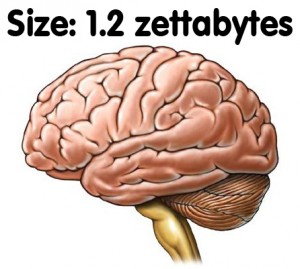Here is a quick round up of the latest updates and news from the SEO sphere!
Google+ For Business: It’s Good for You
Unbounce loves infographics – and its latest, impressively long example makes a powerful case for the merits of Google+ for business. Headline benefits include: it’s indexed by Google; it’s new, but already has more than 170 million users; and it’s growing rapidly. According to the article, 60 percent of Google+ users log in every day, compared to only 50 percent for Twitter, and Google+ allows you to curate information that builds a business persona and engages an audience. Add the fact that membership will continue to grow, since all Gmail users have a Google+ account by default, and you’re on to a winner, concludes the piece.
Maximizing the Link Potential of Infographics
Infographics are also good for link-building, SEOmoz reminds readers, in a guide to getting good link-mileage from your efforts. Make it really easy to share your work by adding an HTML embed code, recommends the piece, and include some form of branding in the body of the graphic in case people don’t credit you. If you’re serious about reaching an international audience, consider translating your work, and tweet about it in the same language. Reuse your content by reformatting it, using video as a powerful repurposing tool, promote it to death among your social networking circles, then wait for it to go viral, concludes the article.
Don’t Neglect Your Video Landing Pages
Given the popularity of video content, don’t waste your creative efforts by failing to optimize your landing pages, warns ReelSEO, in a piece that delivers eight solid tips. Ensure your general SEO is in shape before tackling video-specific tasks, and start by using YouTube’s search filters to research high-quality keywords, advises the article. Add an XML video sitemap, and consider adding a text transcript if your page is short on written content, recommends the author. Make it eye-catching, adding stand-out thumbnails, and finally, check your page loads quickly to avoid losing visitors before they view your masterpiece.
Pinterest Tips for B2B Marketers
There’s no shortage of advice for businesses wanting to use Pinterest as a marketing tool, but most of it’s aimed at consumer-focused organizations. Social Media Examiner offers tips for B2B companies wanting to take the plunge, starting with the ever-popular infographic. Pinning attractive cover images of your gated content, including e-books and white papers, is another proven technique, while images of your products and your brand are must-haves, concludes the article.
Ask the Experts: Link-Building 101
PushFire assembled 10 of the best-known names in the SEO industry to answer a series of probing link-building questions, and unearthed some gems in its 2012 guide to Link Building with the Experts. To compete with brands that dominate the top SERPs slots, become a brand yourself, suggests Rand Fishkin – it’s what “real companies do.” The panel is almost unanimous in asserting that links will remain very important to SEO for years yet, with most members still focusing on quality links as the most significant ranking factor. Recent changes to Google’s algorithm, assert the majority of panelists, don’t change white-hat SEO ground rules one iota.
Keyword Research for SEO: Short Tail vs. Long Tail
Keyword research is a critical part to any SEO campaign. An article on The SEO Agency discusses the importance of keyword research and how to effectively use both short-tail and long-tail keywords in your strategy. It is best to use a mix of both types of keywords and the article suggests two strategies to accomplish this 1) combo pages and 2) individual pages. The key is to keep sight of competitive short-tail keywords in your SEO and content development, while taking advantage of specific long-tail phrases.
Creating Content with Compelling Calls to Action
Every piece of content you create, states SEOmoz, should be “leading people to perform measurable actions.” Simply adding a “Buy Now” button to your page isn’t just inadequate, it’s a turn-off, warns the piece. Be provocative, visionary, authoritative, timely or just different, it opines. Telling a coherent story is another key piece of the puzzle, and allows you to lead the reader gently toward the desired conversion. Rate your content against these factors, concludes the article, and change your writing style to plug the gaps.
Google+: Hyperdrive Yet to be Engaged
According to Google’s Bradley Horowitz, Google+ is still waiting for the intense period of growth that has characterized other social media networks, including Facebook and Twitter. Speaking in London, Product Management VP Horowitz noted that it took other “successful social networks … four years to get to the hypergrowth stage.” Horowitz also hinted at soon-to-launch products that will make a big difference to Google+ usage, one of which, he indicated, is a new Google mobile client.
“Do Not Track” – Better Get Used to It
Ad Age Digital speculates about the impact of do-not-track (DNT) technology on the continuing development of digital marketing. Given the unprecedented ability of publishers and marketers to amass data about online consumers, DNT represents a potential return to the marketing stone-age, asserts the piece, but don’t expect it to go away. Consumers will ultimately opt for privacy, and marketers need to adopt other, less intrusive practices. That said, concludes the article, there will remain “a continuing residue of vague consumer unease even in a DNT-on world.”
Google: We’re Not Crowd-Sourcing, We Just Want Your Opinion
Last week, Internet strategist Nathan Sauser noticed a new Google pop-up asking his opinion of the search results it had just delivered, and posted details of the event on his blog. Trying to second-guess Google’s motives, he provoked a number of articles on SEO blogs, including a piece by WebProNews that concluded it was no more than an exercise in gathering live feedback. “This is one of our experiments,” confirmed Google, one which WebProNews believes is easier to use than the current offering.
Conversion Rate Improvement Tips
Too many business websites still fail to deliver content that satisfies visitors, suggests Search Engine Journal, citing missing phone numbers, prices and company information as the main oversights. Many pages also lack a coherent call to action, observes the article. Search Engine Watch, in similar vein, looks at ways to improve conversion rates, starting with gauging customer intent. Structure content according to your visitor’s likely stage in the buying cycle, suggests the piece, avoiding ambiguity throughout and reducing the level of choice at each stage. Remember to ask for feedback, concludes the author, as the first step in building brand loyalty.
Yammer: Microsoft’s Billion-Dollar Facebook Clone?
Microsoft finally shook hands on a deal to acquire Yammer, worth $1.2 billion, reports Wired.com, confirming one of the industry’s worst-kept secrets. Microsoft says that Yammer, “a Facebook-like social network designed specifically for businesses,” will remain independent initially, eventually being wrapped into the company’s other products, including SharePoint and Office 365. Yammer CEO David Sacks, who will stay in post, made headlines in March 2012 when, in response to what he saw as “patent trolling” by Yahoo, he offered a $25,000 signing bonus to any Yahoo employee who left to join Yammer.

Yammer’s logo
SEO: Big Business – and Getting Bigger
BlueCaribu’s infographic on the size of the SEO industry answers a heap of questions, but raises a few more. Every month, 2.4 million Americans, just over half of them male, search for “SEO,” reveals the graphic, and 863 million websites around the globe mention the term. Interestingly, as a nation, the United States has only the fourth-highest interest in SEO, behind India, Pakistan and the Philippines. But try to locate any numbers that show the monetary scale of the industry and you’ll come up short – this piece is more likely to fuel water-cooler debate than board-room strategy.
Bing Image Search – Pretty as a Picture
Having introduced a minimalist look to its SERPs pages in May 2012, Bing announced one month later that it had extended the process to Bing Image Search. Noting that image search accounted for 7 percent of all Bing searches, the company introduced a tile-based layout that received positive responses from Search Engine Land and others. Now sporting a look-and-feel that resembles Pinterest’s much-mimicked layout, the revamped Image Search also features filter bars, trending searches and search suggestions.
Short of Inspiration for Fresh Content? – You May Already Have Written it
Econsultancy takes an outside-the-box look at content generation, often rated by marketers as one of the more difficult techniques to get right, and suggests repurposing existing business communication, including emails, phone calls, training materials and customer service stories. Taking time to reuse some of the content that you already write in response to customer queries and service calls can provide great articles and blog posts that are fresh, original and fun-to-read, asserts the piece.
Try Event-Driven Local Link Building
Local events present great opportunities for link building, suggests SEOmoz, in a post that considers the collateral value of seminars, training days, shows and conferences. While you need to focus primarily on the benefits of the event itself, warns the article, taking a little time to add your event to relevant event-listing websites can result in useful, natural links that are entirely spam-free. Good targets include regional news sites, business magazines and local trade associations; remember to check your competitors’ backlinks to identify link sources, reminds the piece.
Low-Cost Mobile Conversions Largely Ignored
Many search marketers are ignoring the potential of mobile search advertising, squandering the chance of conversions that cost far less than the corresponding desktop ads, suggests Marketing Land, offering two contrasting case studies. Although primarily aimed at pay-per-click practitioners, the advice applies equally well to mobile SEO, and underscores the fact that “most marketers [are] still not serious about mobile,” according to the article. The studies show that driving visitors to call a live agent is a highly effective conversion technique, and reflects the increased use of smartphones in early stages of the buying process.



